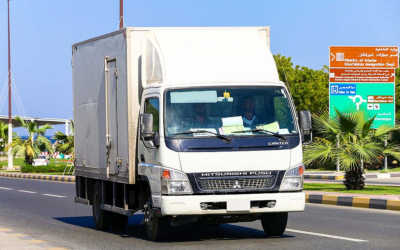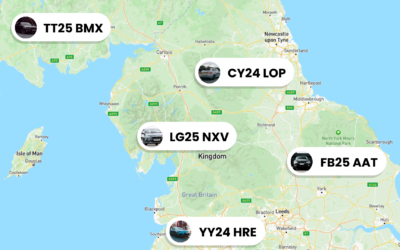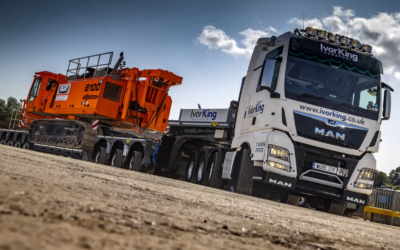Fleet Management ROI: Guide for CFOs & Ops Managers
Understanding fleet management ROI is essential for every fleet manager aiming to justify investments, reduce operating costs and improve uptime. This guide walks you through the metrics, data sources and modelling approach you need to build a robust business case. Read on for practical steps you can use today to quantify benefits and get buy-in from finance and operations.
Why Measure Fleet Management ROI?
Who needs ROI and what decisions it informs
As a fleet manager, you’ll often be asked to justify spend to stakeholders who care about the bottom line. Fleet management ROI helps CFOs, procurement teams and operations managers decide whether to invest in new telematics, predictive maintenance tools or driver coaching programmes. It informs buy-versus-build choices, renewal decisions and the prioritisation of projects that deliver the highest financial return.
Key financial and operational outcomes to target
Focus on outcomes that translate directly into savings or revenue: cost per mile, utilisation, reduced downtime, lower accident and insurance costs, and reduced fuel or energy consumption. Each maps to a line in your P&L and improves the credibility of your fleet management ROI calculation.
Risks of making decisions without ROI
Buying software or hardware without quantifying ROI can result in wasted budgets, poor vendor choices and slow adoption. Without a clear ROI, you risk scope creep and projects that fail to deliver measurable benefits. A disciplined ROI process reduces these risks and sets clear expectations for outcomes.
Core KPIs to Track for Accurate ROI Calculations
Cost per mile / total cost of ownership components
Your baseline starts with total cost of ownership (TCO). Include depreciation, financing, insurance, licensing, taxes and administration. Express this as cost per mile so improvements from fuel savings, route optimisation or utilisation are directly comparable and feed into your fleet management ROI model.
Utilisation, productivity, and asset lifecycle metrics
Measure vehicle utilisation rate, average daily miles, idle time and optimal replacement age. Small improvements in utilisation or extending useful life by even a few months can materially improve your fleet management ROI by spreading fixed costs over more productive miles.
Maintenance, downtime, and fuel/energy spend
Track scheduled vs unscheduled maintenance, mean time between failures, parts spend and fuel consumption. These categories are often the largest levers for ROI because telematics, preventive maintenance and driver coaching directly reduce them. For deeper reading on maintenance techniques, see Predictive Maintenance for Fleets: Cut Downtime with AI and Preventive Maintenance for Fleets: A Manager’s Playbook.
Baseline Current Performance: Data & Methodology
Primary data sources and how to collect them
Reliable ROI starts with reliable data. Combine telematics, fuel card statements, maintenance management systems, payroll and accounting data. Use your vehicle tracking platform and tie it into back-office systems to capture mileage, idling, driver behaviour and spend. If you need improved location and movement visibility, consider integrating Tracking solutions to fill gaps.
Ensuring data quality and filling gaps
Clean data yields credible ROI. Validate mileage against odometer reads, reconcile fuel card transactions and normalise maintenance codes. If a dataset is missing, use reasonable proxies (for example, average fuel consumption by vehicle class) but flag assumptions clearly in your model.
Calculating your current TCO and KPI baselines
Aggregate inputs into annual TCO and compute primary KPIs. Create a one-page baseline that shows current cost per mile, utilisation and maintenance spend. This baseline becomes the reference for your projected savings and the foundation of your fleet management ROI case.
Modeling Projected Savings from Fleet Management Software
Quantifying savings by category
Map each software feature to an expected saving. For example, smart routing reduces fuel and miles (see Smart Routing & Driver Coaching to Cut Fleet Fuel Costs); telematics enable driver coaching and reduce harsh events; predictive maintenance can cut unscheduled downtime and parts spend (see Predictive Maintenance for Fleets: Cut Downtime Fast). Quantify savings as a percentage reduction of your baseline KPI (e.g. 5–15% fuel reduction, 10–30% fewer breakdowns).
Scenario modeling: conservative, likely, and optimistic
Build three scenarios: conservative (low adoption, minimal benefits), likely (expected performance), and optimistic (best-case). For each scenario show annual savings, cumulative savings and the impact on fleet management ROI. This helps stakeholders understand risk and upside and supports a staged rollout approach.
Time horizon, payback period, and discounted cash flows
Choose a time horizon (commonly 3–5 years) to calculate payback and simple ROI. For larger investments use NPV or IRR to account for the time value of money. Include recurring costs—subscription fees, connectivity and support—so your ROI reflects net savings. Calculating a clear payback period is often the most persuasive metric for finance.
Ready to see how these numbers stack up for your fleet? Book a personalised session with Traknova to walk through a model tailored to your vehicles and routes: Book demo.
Presenting the Business Case & Getting Buy-In
Building a clear, executive-friendly ROI template
Prepare a one-page executive summary showing baseline, expected annual savings, payback period and key KPIs. Include a short appendix with assumptions, data sources and sensitivity analysis. Use visuals—charts for payback and stacked bars for cost breakdown—to make results easy to scan.
Anticipating objections and risk mitigation
Common concerns include integration complexity, change management and vendor lock-in. Address these by outlining integration points, pilot phases and exit clauses. Highlight security measures if stakeholders ask about data protection—link to your Security approach—and show how features like Dash Cameras reduce accident dispute costs.
Implementation costs, timelines, and success metrics
Estimate upfront costs (hardware, installation, integration) and recurring costs (licences, connectivity). Present a phased timeline—pilot, rollout, optimisation—and list the post-implementation success metrics you’ll track: realised fuel savings, downtime reduction, maintenance cost per mile, and driver behaviour improvements. Use these to validate the promised fleet management ROI over time.
Conclusion
Quantifying fleet management ROI turns opinions into measurable outcomes. Start with clean baseline data, focus on the KPIs that map directly to costs, model conservative-to-optimistic scenarios, and present a clear, visual business case that addresses stakeholder concerns. With a disciplined approach you’ll not only secure the budget but also create the measurement framework to validate success.
Want help building your model? Traknova works with fleet managers to turn telemetry and maintenance data into an actionable ROI model. Book demo to see a tailored forecast for your fleet.
FAQs
How long does it take to calculate fleet management ROI?
Typically 1–4 weeks depending on data availability. A quick assessment can be done in a few days using sample data; a full model requires reconciled fuel, maintenance and telematics records.
Which features give the fastest payback?
Smaller fleets often see fastest payback from driver coaching and routing optimisation. Larger fleets can realise quick wins from predictive maintenance and improved utilisation.
Can I prove ROI without full telematics coverage?
Yes. Use proxies and phased pilots. However, complete telematics coverage improves accuracy. For tracking improvements consider Traknova’s Tracking solutions to speed up data collection.
We value your feedback. Did this guide help you plan your next investment? Please leave a comment, share on social media, or tell us the biggest ROI challenge you face as a fleet manager. Which KPI would you like a template for?
If you’d like a guided walkthrough tailored to your operation, Book demo with Traknova today or Contact us for more details. If you found this useful, please share it with colleagues on LinkedIn or Twitter.










